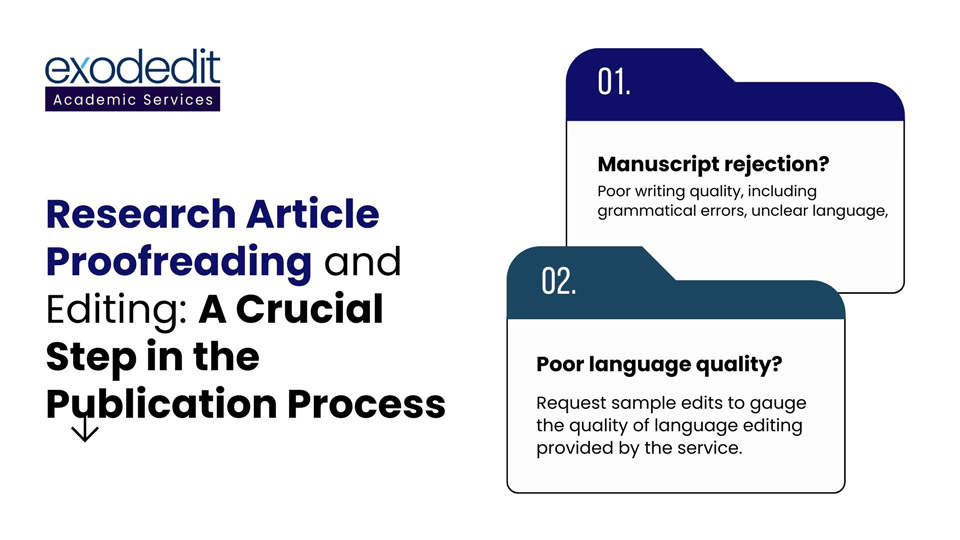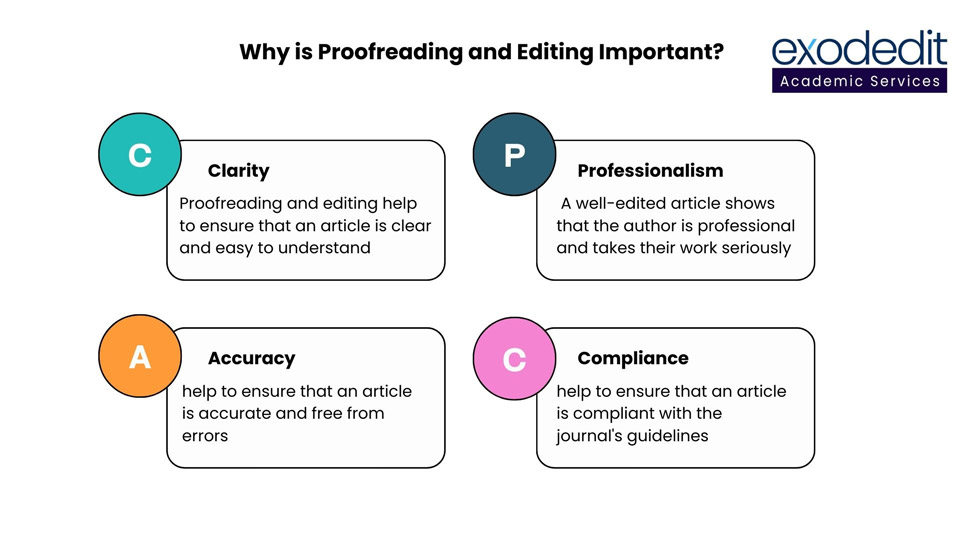
The process of publishing a research article can be a long and arduous journey. From the initial conception of an idea to the final submission of the article, there are many steps involved. One crucial step in the publication process is proofreading and editing. In this article, we will discuss why proofreading and editing are so important and provide tips for authors to ensure their articles are error-free.
Why is Proofreading and Editing Important?
Proofreading and editing are essential parts of the publication process. They serve as the final quality control check before an article is published. Here are some of the reasons why proofreading and editing are so important:
1. Clarity: Proofreading and editing help to ensure that an article is clear and easy to understand. This is especially important in scientific writing, where clarity is crucial.
2. Professionalism: A well-edited article shows that the author is professional and takes their work seriously. This can help to increase the credibility of the article and the author.
3. Accuracy: Proofreading and editing help to ensure that an article is accurate and free from errors. This is important in scientific writing, where accuracy is paramount.
4. Compliance: Proofreading and editing help to ensure that an article is compliant with the journal’s guidelines. This can help to avoid delays in the publication process.

Tips for Effective Proofreading and Editing
Now that we know why proofreading and editing are so important, let’s discuss some tips for effective proofreading and editing.
1. Take a break: After writing an article, it is important to take a break before proofreading and editing. This allows the author to come back to the article with fresh eyes and a clear mind.
2. Read out loud: Reading an article out loud can help to identify errors and awkward phrasing. This is especially useful for identifying grammatical errors and typos.
3. Use a checklist: Using a checklist can help to ensure that all aspects of an article are reviewed, including grammar, spelling, punctuation, and formatting.
4. Get feedback: It is important to get feedback from colleagues or other experts in the field. This can help to identify areas that need improvement and ensure that the article is accurate and well-written.
Proofreading and editing are essential parts of the publication process. They help to ensure that a manuscript is clear, accurate, and compliant with the journal guidelines. By following the tips outlined in this article, authors can ensure that their articles are error-free and of the highest quality. With careful attention to detail and a commitment to excellence, authors can increase the chances of their articles being published and making a significant impact in their field.

